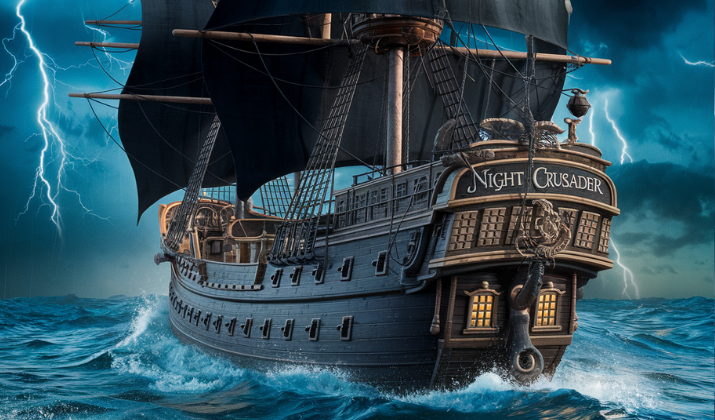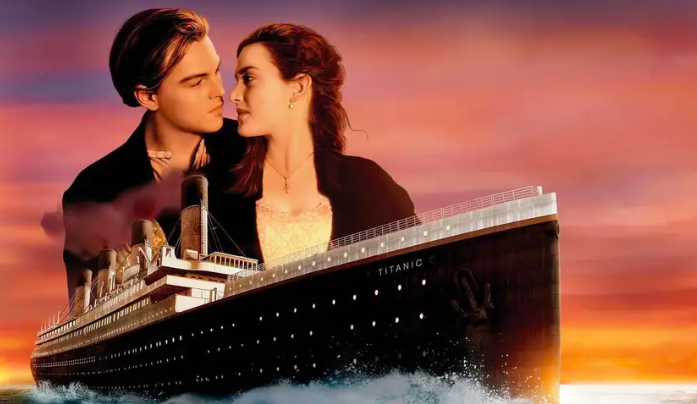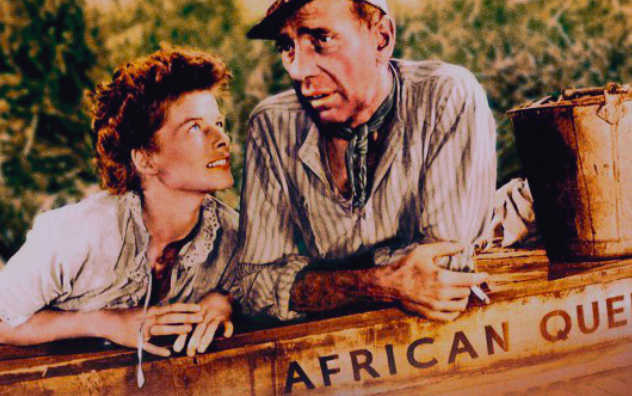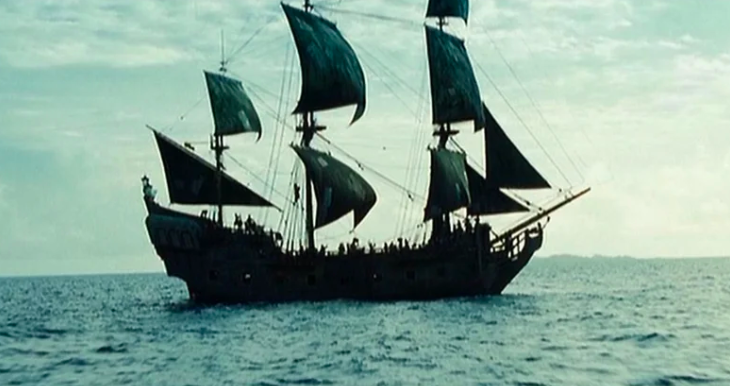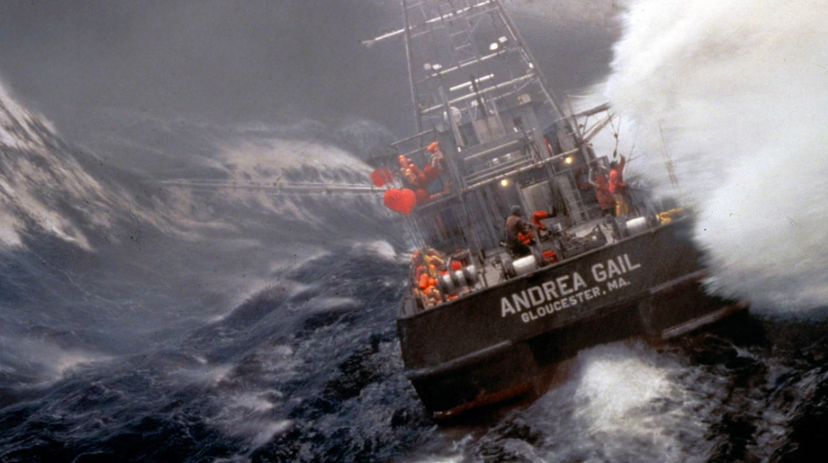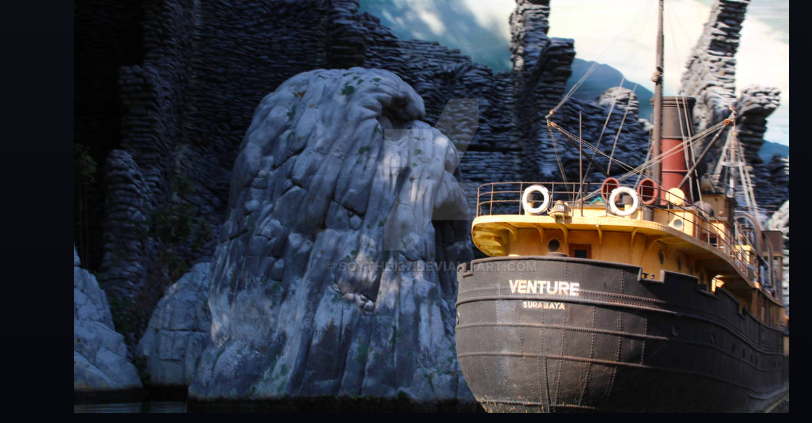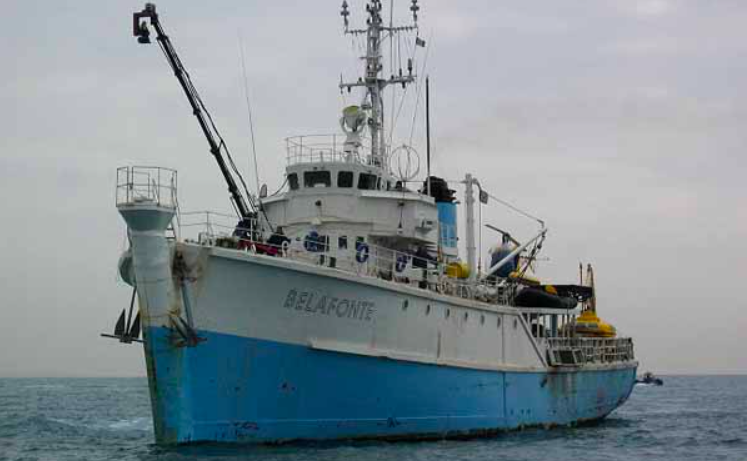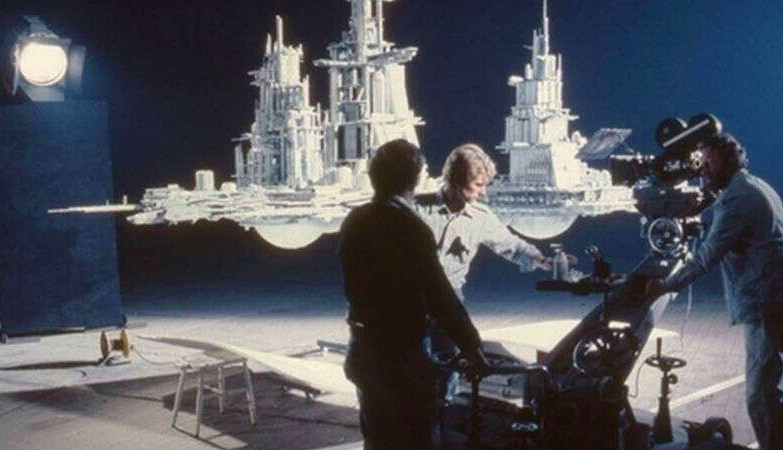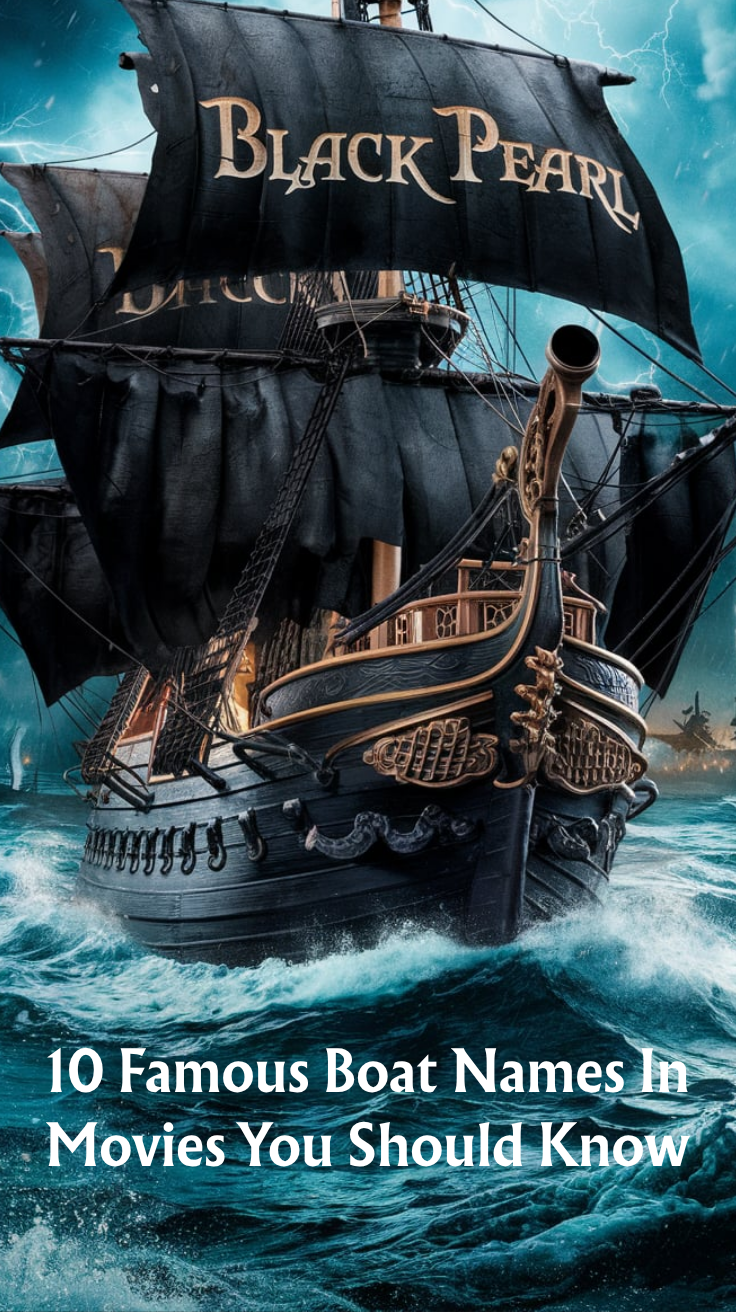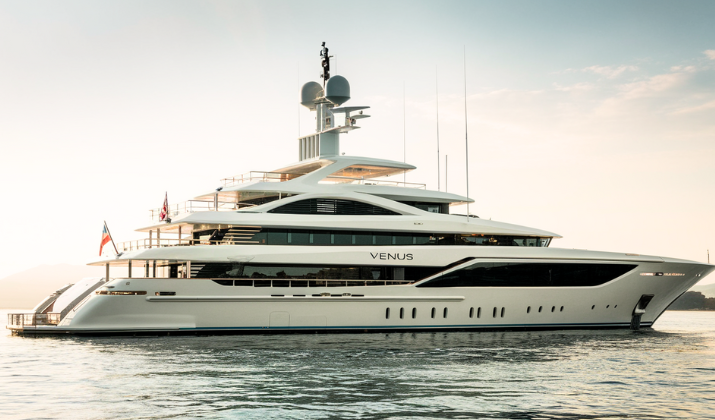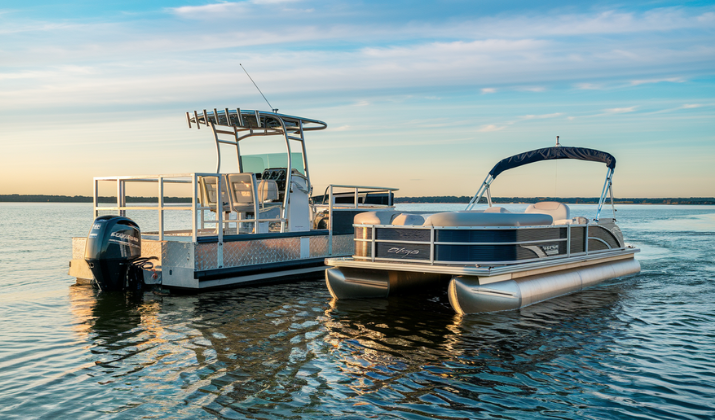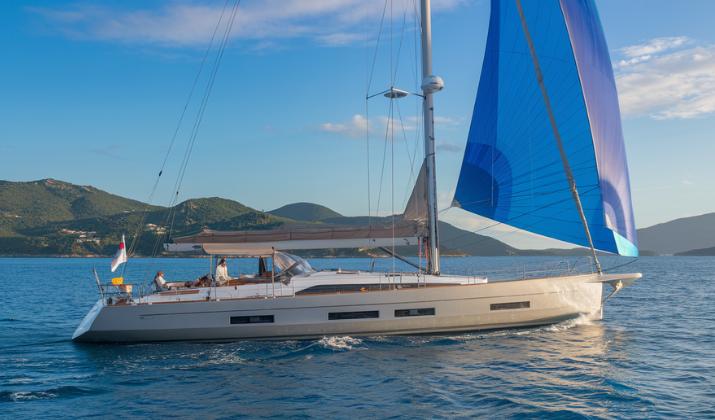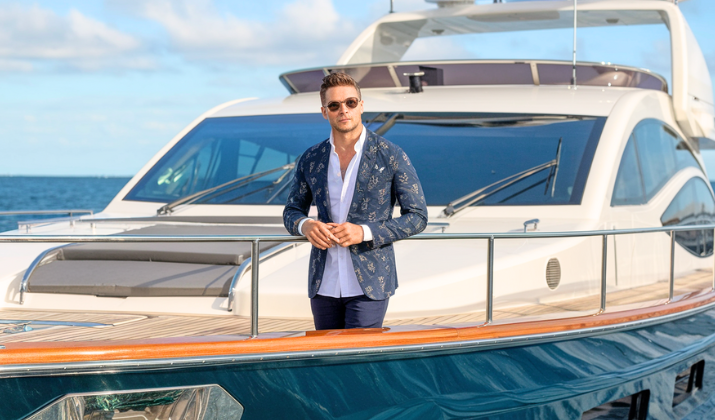Movies have given us some of the most memorable vessels in cinematic history.
From luxury liners to fishing boats, these ships have become characters in their own right, often outlasting the films themselves in popular culture.
In this post, we will explore some of the most-famous movies that rallied around unforgettable boat names. The names that are still a part of our collective memory even after decades.
Let’s dig in.
Also Read: 100 Witty Boat Names
1. Titanic – Titanic (1997)
Perhaps the most famous ship in movie history, James Cameron’s Titanic brought the ill-fated luxury liner back to life with stunning detail.
The RMS Titanic became synonymous with both grandeur and tragedy, serving as the backdrop for one of cinema’s greatest love stories while depicting one of history’s most devastating maritime disasters.
Cameron’s meticulous recreation included everything from the grand staircase to the ship’s massive propellers, creating an authentic floating palace that emphasized the stark class divisions of 1912.
The ship itself becomes a character representing human hubris—the “unsinkable” vessel that met its doom on its maiden voyage.
The Titanic’s slow, inevitable descent into the icy Atlantic waters provided some of cinema’s most haunting imagery, making the ship’s name forever associated with both romance and catastrophe.
Also Read: 100 Funny Yacht Names
2. The Orca – Jaws (1975)
Quint’s weathered fishing boat became an iconic vessel in Spielberg’s thriller masterpiece.
The Orca’s cramped quarters intensified the tension as three men hunted the great white shark, and its ultimate destruction marked the climax of their deadly encounter.
The boat’s name, referencing killer whales, was a perfect choice for a shark-hunting vessel.
Built as a working charter boat, the Orca reflected Quint’s gruff, no-nonsense personality, functional rather than fancy, with fishing equipment, harpoons, and barrels cluttering its deck.
The vessel’s modest size emphasized the men’s vulnerability against the massive predator lurking beneath.
When the shark finally attacks the boat directly, ripping through its hull and causing it to sink, the Orca’s destruction represents the failure of human technology against nature’s raw power, leaving the survivors to face their nemesis with nothing but primitive weapons.
Check Out: Funny Kayak Names, And Name Generators
3. African Queen – The African Queen (1951)
Humphrey Bogart and Katharine Hepburn’s unlikely romance played out aboard this rusty old steamboat navigating treacherous African waters during World War I.
The African Queen herself was as much a character as the leads, representing both hope and determination against impossible odds.
This 30-foot steam launch, with its exposed boiler and primitive steering mechanism, became a symbol of perseverance as missionary Rose Sayer and gruff boat captain Charlie Allnut attempted the impossible—navigating uncharted rapids and German patrols to torpedo a enemy warship.
The boat’s dilapidated condition, constantly breaking down and requiring repairs, provided both comic relief and genuine tension.
Despite being battered by rapids, attacked by leeches, and nearly destroyed multiple times, the African Queen’s stubborn refusal to sink mirrored her passengers’ determination to complete their mission against all odds.
Also Read: Funny & Dirty Boat Names
4. Poseidon – The Poseidon Adventure (1972)
This luxury ocean liner’s New Year’s Eve celebration turned into a nightmare when a massive wave capsized the ship.
Named after the Greek god of the sea, the SS Poseidon became the setting for one of the greatest disaster films ever made, with survivors fighting their way through the upside-down vessel.
The ship’s opulent ballroom, elegant dining areas, and luxurious staterooms became death traps when flipped upside down, forcing passengers to navigate through a disorienting maze where ceilings became floors and chandeliers hung menacingly overhead.
The Poseidon’s massive size, which initially represented safety and comfort, became a liability as passengers faced flooding compartments, collapsing structures, and fires throughout their desperate journey to the hull.
The ship’s gradual surrender to the sea, settling deeper with each passing hour, created an relentless ticking clock that drove the survivors forward through increasingly dangerous passages.
Explore: Best Kayak Movies & Documentaries
5. Black Pearl – Pirates of the Caribbean series (2003-2017)
Captain Jack Sparrow’s beloved ship is “the fastest ship in the Caribbean” and one of the most recognizable vessels in modern cinema.
With its distinctive black hull and supernatural speed, the Black Pearl embodies the romanticized pirate ship of our imaginations and serves as Jack’s true love throughout the swashbuckling series.
Originally a merchant vessel called the Wicked Wench, the ship was burned and sunk by the East India Trading Company, only to be raised from the depths by Davy Jones and rechristened the Black Pearl.
Its supernatural origins grant it incredible speed and near-indestructibility, making it a formidable adversary for the British Navy.
The ship’s crew of cursed pirates, led by the treacherous Captain Barbossa, adds to its mystique.
For Jack Sparrow, the Black Pearl represents ultimate freedom—the ability to sail anywhere without answering to any authority.
The ship’s theft and subsequent recovery drive much of the series’ plot, establishing it as more than just transportation but as Jack’s very soul made manifest.
6. Intercept – Speed 2: Cruise Control (1997)
While the film itself was less acclaimed than its predecessor, the luxury cruise ship Seabourn Legend (renamed Intercept for the movie) provided the floating setting for Sandra Bullock’s second high-speed adventure.
The ship’s size and luxury amenities created a unique backdrop for the action sequences. This massive cruise liner, with its multiple decks, elegant dining rooms, swimming pools, and hundreds of passengers, transformed from a pleasure palace into a potential weapon when hijacked by a deranged passenger.
The ship’s sophisticated computer systems, which normally provided comfort and convenience, became tools of terror in the wrong hands.
Unlike the confined space of a city bus in the original Speed, the cruise ship’s vast scale presented new challenges—how do you evacuate hundreds of passengers from a ship programmed to crash into an oil tanker?
The Intercept’s luxurious facade masked the deadly game being played in its corridors, as passengers remained largely unaware of the danger while enjoying their Caribbean vacation.
Also Read: Ideas For Magical Movie Nights On Pontoon Boats
7. Andrea Gail – The Perfect Storm (2000)
Based on the real fishing vessel lost during the 1991 Perfect Storm, this sword fishing boat and her crew faced impossible odds against a meteorological phenomenon.
The Andrea Gail’s story highlighted the dangers faced by those who make their living from the sea.
This 72-foot commercial fishing vessel, captained by Billy Tyne, represented the working-class struggle against both economic hardship and nature’s fury.
Desperate for a profitable catch after a disappointing season, the crew pushed further into dangerous waters as three massive weather systems converged to create the storm of the century.
The Andrea Gail’s sturdy construction, built to handle rough seas and heavy loads of fish, proved insufficient against 100-foot waves and hurricane-force winds.
The film portrayed the vessel’s final hours with devastating realism, showing how even experienced fishermen and seaworthy boats can be overwhelmed by nature’s ultimate power.
9. Venture – King Kong (1933, 2005)
The SS Venture carried filmmaker Carl Denham and his crew to the mysterious Skull Island in both the original 1933 classic and Peter Jackson’s 2005 remake.
This cargo steamer served as the gateway between civilization and the prehistoric world where Kong ruled supreme.
In the original film, the Venture was a modest tramp steamer, reflecting the Depression-era setting and the production’s limited budget, yet it effectively conveyed the sense of a perilous journey into uncharted waters.
Peter Jackson’s version transformed the vessel into a more elaborate period piece, complete with detailed rigging and authentic 1930s maritime equipment.
The ship’s crew, a rough collection of sailors and adventurers, embodied the era’s spirit of exploration and exploitation.
As the Venture approached Skull Island through treacherous fog and jagged rocks, it carried its passengers from the known world into a realm of monsters and ancient mysteries.
Check Out: Best Luxury Boat Brands
9. Calypso – The Life Aquatic with Steve Zissou (2004)
Wes Anderson’s whimsical research vessel, complete with its distinctive cross-section view, became the floating base for Steve Zissou’s eccentric oceanographic adventures.
The Belafonte (nicknamed Calypso) perfectly captured the film’s quirky aesthetic and served as home to its ensemble of marine researchers and documentary filmmakers.
This converted minesweeper, with its bright red hull and distinctive yellow submarine, embodied Anderson’s signature visual style, meticulously detailed, symmetrical, and slightly surreal.
The ship’s interior, revealed through Anderson’s trademark dollhouse-style cutaway shots, showcased multiple levels of activity: laboratories, editing rooms, crew quarters, and common areas, each decorated with maritime artifacts and scientific equipment.
The vessel served as both workplace and family home for Zissou’s dysfunctional crew, housing their personal dramas alongside their scientific pursuits.
10. Nostromo – Alien (1979)
Though technically a spaceship, the USCSS Nostromo deserves mention as one of cinema’s most claustrophobic vessels.
This commercial towing vehicle became a haunted house in space, with its industrial design and cramped corridors creating the perfect atmosphere for the xenomorph’s deadly hunt.
The Nostromo’s functional, utilitarian design reflected its working-class crew—no sleek surfaces or advanced technology, just a blue-collar workspace hauling cargo across the galaxy.
Its maze-like interior, with countless vents, maintenance shafts, and dark corners, provided the perfect hunting ground for the alien creature.
The ship’s computer system, “Mother,” added an ominous presence, dispensing information with cold indifference while concealing the company’s true priorities.
As crew members disappeared one by one, the Nostromo transformed from a sanctuary into a trap, with every shadow potentially hiding death.
Also Read: Most-Expensive Wakeboard Boats
Conclusion
These vessels remind us that in cinema, boats are the floating stages where human drama unfolds against the vast backdrop of the sea.
Through natural disasters, supernatural threats, and personal conflicts, these famous ships have carried their passengers to unforgettable journeys.
From the tragic grandeur of the Titanic to the supernatural speed of the Black Pearl, these boat names have earned their place in movie history, proving that sometimes the vessel itself becomes the most memorable character of all.

